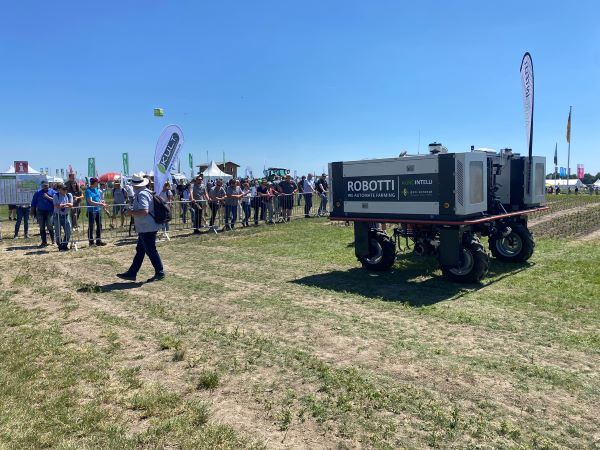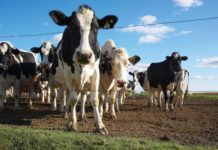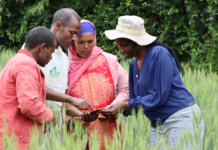
The DLG (German Agricultural Society) is launching its new FarmRobotix platform at the DLG Feldtage trade fair, which will take place from 11 to 13 June at the estate Brockhof in the heart of the Soester Börde in Germany, a highly fertile region thanks to the depth of its loess soils.
FarmRobotix offers an international platform for farmers and experts seeking compact and comprehensive information on the latest developments in robotics, AI, automation and digital solutions in crop production. Aimed at farmers, manufacturers, start-ups and technology providers, FarmRobotix also offers representatives from science and research as well as development engineers, investors and venture capitalists the opportunity to network, share knowledge and explore innovative technologies.
This technical article shows where the greatest challenges currently lie in the application of digital and autonomous technologies in crop farming – and what contribution the FarmRobotix platform can make to solving these issues.
Florian Schiller, an expert in digitalisation at the International DLG Crop Production Centre (IPZ) in Bernburg, Saxony-Anhalt, says that FarmRobotix is a platform, which focuses on farming requirements for digital technologies. Ultimately, digital technologies should be practical tools to make the day-to-day operational work of agricultural entrepreneurs more efficient, simpler and less time-consuming and labour-intensive.
Platform goal: More user-friendliness for digital tools
“There are currently a large number of digital solutions available to farmers for various crop cultivation tasks,” explains Schiller. “However, their application requires prior knowledge on part of the user. This is because each provider of digital solutions typically supplies a customised software system for using the digital tools and the data. “For agricultural farming entrepreneurs, this means that the number of software applications they need to master potentially increases with every digital tool they introduce on their farm,” explains Schiller. “the FarmRobotix platform can play a role in providing impetus in the dialogue between farmers, manufacturers and science in order to make the digital applications of different manufacturers compatible with each other,” adds Schiller.
Robotics solutions for large-scale farming
Another important issue for robotics in general is the large-scale application on farm land. There are already robotic solutions for seeding and for mechanical crop protection. However, according to Schiller, these are generally applications that are used on a small scale. “An important question for the future is therefore how robotics or autonomous solutions can be integrated into our existing system of arable land management, which is geared towards efficiency,” says Schiller.
Used in agriculture both in animal housing and outdoors, in the fields, robotics can have different degrees of automation, ranging from systems that work partially autonomously but are still dependent on human operation to fully autonomous solutions.
Partially autonomous agricultural systems are used in crop cultivation, for example as robotic systems in mechanical and chemical crop protection with small robots or in large machines with sensor-based individual nozzle control. There are also robotic systems for seeding, fertilising and soil cultivation. In animal husbandry, autonomous systems are mainly used as milking robots, autonomous feed mixers and feeding and cleaning systems.
AI in agriculture requires highly specialised training
In contrast to some other industries, the use of autonomous systems in agriculture is still at the pilot and research stage. This is mainly due to the fact that an agricultural robot has to perform more complex tasks than a robot used in industrial production, for example.
DLG’s expert Florian Schiller explains the complexity involved for robots in crop cultivation. DLG’s IPZ farm is part of several research projects on digitalisation and AI in crop production, including the NaLamKI project funded by Germany’s Federal Ministry of Economic Affairs.
NaLamKI stands for Sustainable Agriculture with AI. The research project aims at developing AI services for agriculture, which can analyse data from conventional and autonomous agricultural machinery, satellites and drones, combine them in a software service platform and make the results accessible through open interfaces. As an associated partner in the project, the IPZ is working on the early detection of fungal diseases in wheat using AI. Other project partners include the Fraunhofer Institute for Telecommunications (Heinrich Hertz Institute, HHI), the agricultural machinery manufacturer John Deere and the University of Hohenheim.
For Florian Schiller, the NaLamKI project shows once again that there is still a great need for research before AI can be applied on a large scale in agriculture. Schiller explains this with the high cost of data collection, which is necessary for some applications in plant cultivation. This is because AI needs a large amounts of training data for certain crop cultivation applications to make a practical contribution. One example is the area of fungal disease detection.
Challenge: differentiating between a wide range of properties
The aim of AI-supported detection of fungal diseases, which is being researched in the NaLamKI project, is to use multi- and hyperspectral image analysis to establish when a fungal infection has taken place in a crop – “even before the human eye can detect it,” emphasises Schiller. To do this, the spectral characteristics of different fungal species must be recorded on the leaf surface of the plant in order to create a suitable training data set for the AI.
According to the DLG’s expert, challenges arise from the fact that not only fungal pathogens, but also external factors such as drought or plant nutrition have an influence on the spectral properties of the leaf surface. In other words, the AI must be trained to recognise the various properties that are influenced by fungal pathogens. “It is therefore always crucial for AI systems that the data delivers accurate information about the properties to be recognised. Otherwise, AI models do not reflect what they are supposed to provide information about,” says Schiller. Consequently, a lot of work by various experts is still required before plant disease detection is ready for practical application; Schiller is convinced that FarmRobotix can also make a valuable contribution to the required networking.
According to Florian Schiller, one AI application that is already closer to practical maturity is spot spraying in herbicide application. This technology is based on recognising non-crop plants or weeds in crops.







